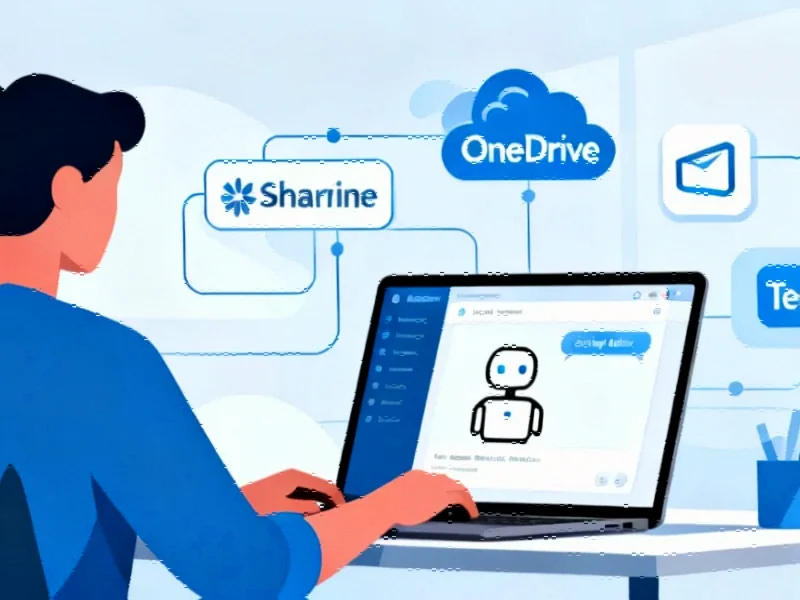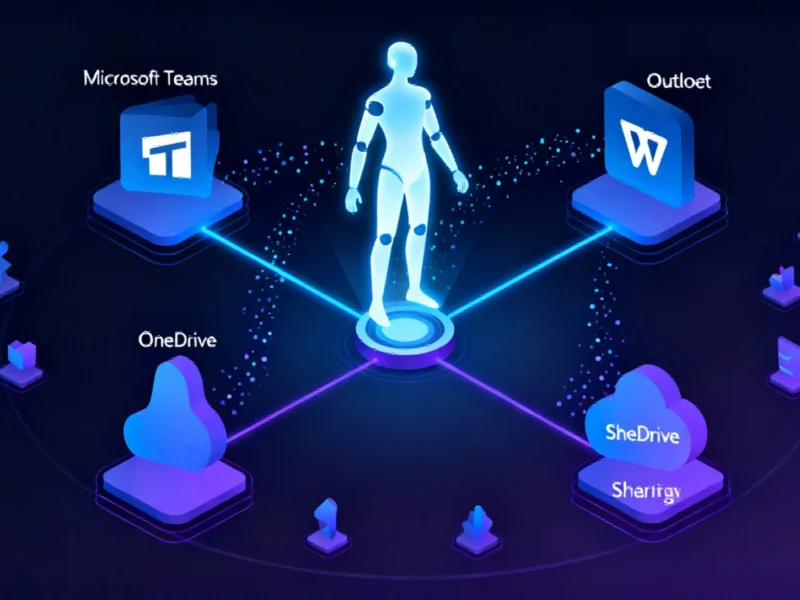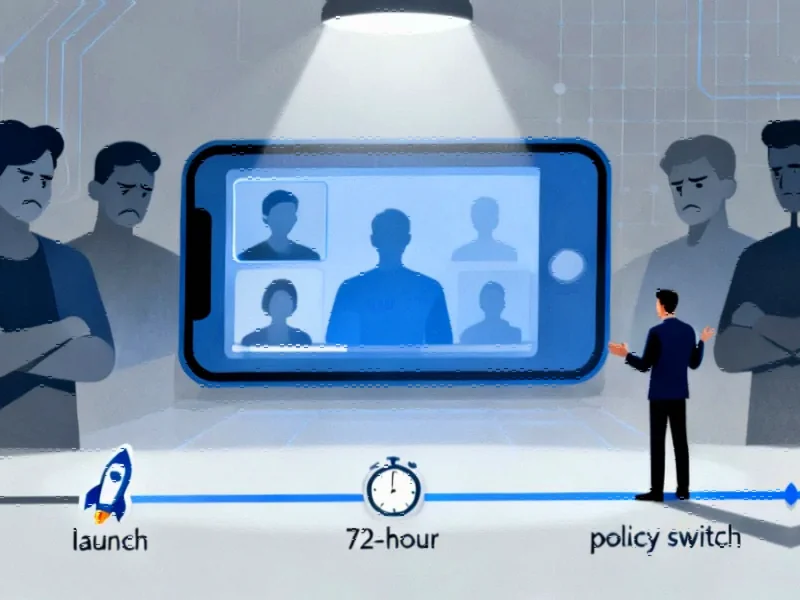Anthropic’s Enterprise Play: Claude AI Connects to Microsoft 365 Ecosystem
In a significant move that reshapes the enterprise AI landscape, Anthropic has launched a comprehensive Microsoft 365 connector for its Claude AI assistant, enabling direct integration with SharePoint, OneDrive, Outlook, and Teams. This strategic deployment allows Claude Team and Enterprise subscribers to leverage the chatbot’s capabilities across their daily workflow applications, potentially challenging Microsoft’s own Copilot dominance in the productivity suite arena.
The integration operates through Anthropic’s Model Context Protocol (MCP), granting Claude access to organizational data that enables more personalized and context-aware responses. “This represents a fundamental shift in how enterprises can approach AI implementation,” noted an industry analyst. “Rather than forcing employees to learn new systems, it brings advanced AI capabilities directly into the tools they already use daily.”
Enhanced Productivity Through Contextual Understanding
The Microsoft 365 connector enables Claude to perform sophisticated tasks that previously required manual effort across multiple applications. Employees can now ask Claude to analyze email patterns in Outlook, synthesize information from Teams conversations, or extract critical data from SharePoint repositories. This contextual understanding allows for more nuanced assistance with complex problem-solving and decision-making processes.
According to recent analysis of Anthropic’s integration strategy, the company has focused specifically on enterprise workflow optimization rather than general-purpose chatbot functionality. This targeted approach appears to be resonating with business users seeking practical AI solutions.
Enterprise Search: Centralizing Organizational Knowledge
Complementing the Microsoft 365 integration, Anthropic has introduced a new enterprise search feature that creates a unified knowledge base from multiple critical business applications. This capability addresses one of the most persistent challenges in large organizations: fragmented information across disparate systems.
“The enterprise search function represents a significant advancement in organizational AI,” explained a technology consultant specializing in digital transformation. “By creating a single source of truth that spans HR systems, communication platforms, and document repositories, companies can dramatically reduce the time employees spend searching for information.”
Implementation and Security Considerations
The new capabilities are currently available to Claude Team and Enterprise subscribers, though implementation requires administrative activation and careful configuration. Account administrators must curate which digital tools and data sources are included in the organization-wide access, ensuring appropriate security and privacy controls remain in place.
This launch comes amid broader enterprise software developments that highlight the increasing importance of secure AI integration in corporate environments. As organizations grapple with balancing accessibility and security, solutions like Anthropic’s MCP protocol aim to provide both functionality and protection.
Strategic Implications for the AI Market
Anthropic’s Microsoft 365 integration arrives during a period of significant realignment in the AI industry. The partnership between Microsoft and Anthropic has deepened in recent months, coinciding with Microsoft’s gradual diversification beyond its exclusive relationship with OpenAI. This strategic positioning reflects the complex geopolitical and market dynamics shaping the global AI ecosystem.
The timing is particularly noteworthy given Anthropic’s recent funding round, which valued the company at approximately $183 billion. This valuation underscores the tremendous market potential that investors see in enterprise-focused AI solutions, especially those that integrate seamlessly with existing productivity suites.
Comparative Advantage in Enterprise Computing
While Microsoft’s Copilot remains integrated within the Microsoft ecosystem, Claude’s approach emphasizes cross-platform compatibility and specialized enterprise functionality. This differentiation could prove significant as organizations evaluate their long-term AI strategies. The ability to process information across multiple Microsoft applications simultaneously gives Claude a distinct advantage for complex analytical tasks.
These technology infrastructure investments parallel broader industry trends toward specialized AI solutions tailored to specific business needs rather than one-size-fits-all approaches.
Future Outlook and Industry Impact
The integration signals a maturation of the enterprise AI market, moving beyond basic chatbot functionality toward deeply embedded workflow enhancement. As organizations continue to digitalize their operations, solutions that bridge multiple systems while maintaining security and compliance will likely see increased adoption.
This development occurs alongside other significant hardware advancements that support increasingly sophisticated AI applications. The convergence of powerful new processing capabilities with intelligent software integration points toward a future where AI becomes truly ubiquitous in enterprise computing environments.
As the competitive landscape evolves, the success of Anthropic’s Microsoft 365 integration may influence how other AI developers approach enterprise market penetration. The emphasis on practical, workflow-specific applications rather than general conversational ability represents an important shift in product strategy that reflects actual business needs.
These ongoing organizational transformations highlight the broader context in which enterprise AI solutions are being deployed, with efficiency and productivity improvements remaining paramount concerns for technology decision-makers across industries.
This article aggregates information from publicly available sources. All trademarks and copyrights belong to their respective owners.
Note: Featured image is for illustrative purposes only and does not represent any specific product, service, or entity mentioned in this article.



